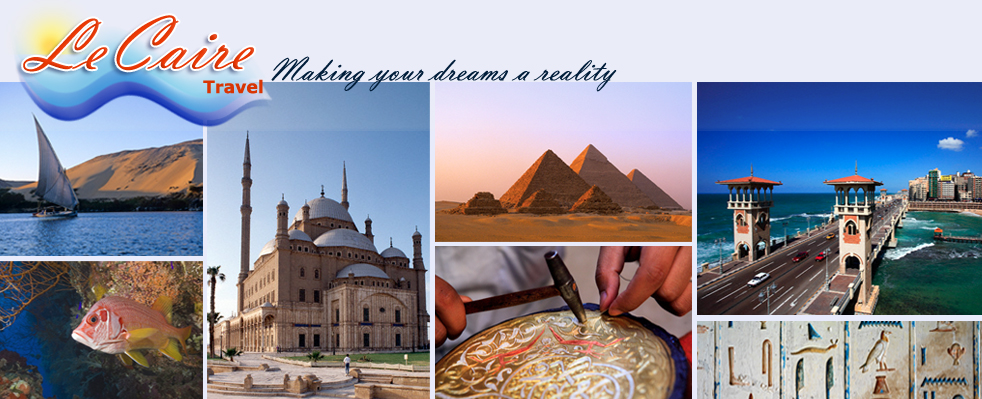|
|
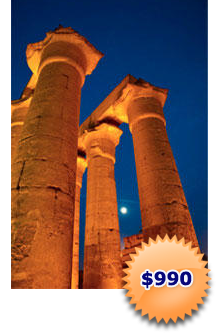 |
Superior Offer
09 Nights / 10 Days
Discover the Difference |
|
|
|
 |
| |
|
 |
Aswan Sights
|
|
 |
|
| |
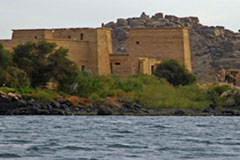 Philae Temple Philae Temple
The Egyptian island of Philae was the center for worship of the goddess Isis and attracted pilgrims from all over the ancient world.
The original island is now completely submerged under the waters of Lake Nasser. But in a spectacular rescue operation, the great temples and monuments of Philae were pulled out of the water and re-erected on a nearby island, now renamed Philae.The earliest building on the island of Philae was a small temple to Isis built in about 370 BC by Napktnebef Kheperkare (Nectanebo I).This was later expanded into a great Temple of Isis by a number of rulers, most notably Ptolemy II Philadelphius (285-246 BC) and Diocletian (284-305 AD).
The temples of Philae were finally closed in 535 AD by order of Emperor Justinian. Some of the chambers were converted for Christian worship and a Coptic community lived on the island until the coming of Islam.
In the 18th and 19th centuries, Philae was renowned for its beauty and became a popular tourist destination for well-to-do Europeans. But with the building of the Aswan Dam, the island was submerged for most of the year and Philae began to lose its charm. The gray coloring of the lower part of the temples still shows the effect of their annual immersion during this period.
When the High Dam project threatened to engulf Philae completely, the temples were saved by a great international rescue operation sponsored by UNESCO, which took place between 1972 and 1980. The island of Philae was surrounded by a coffer dam and drained, while a new site was prepared on the neighboring island of Agilka. The temples were broken up into sections and carefully numbered, then re-erected in the same relative positions on Agilka. |
 
|
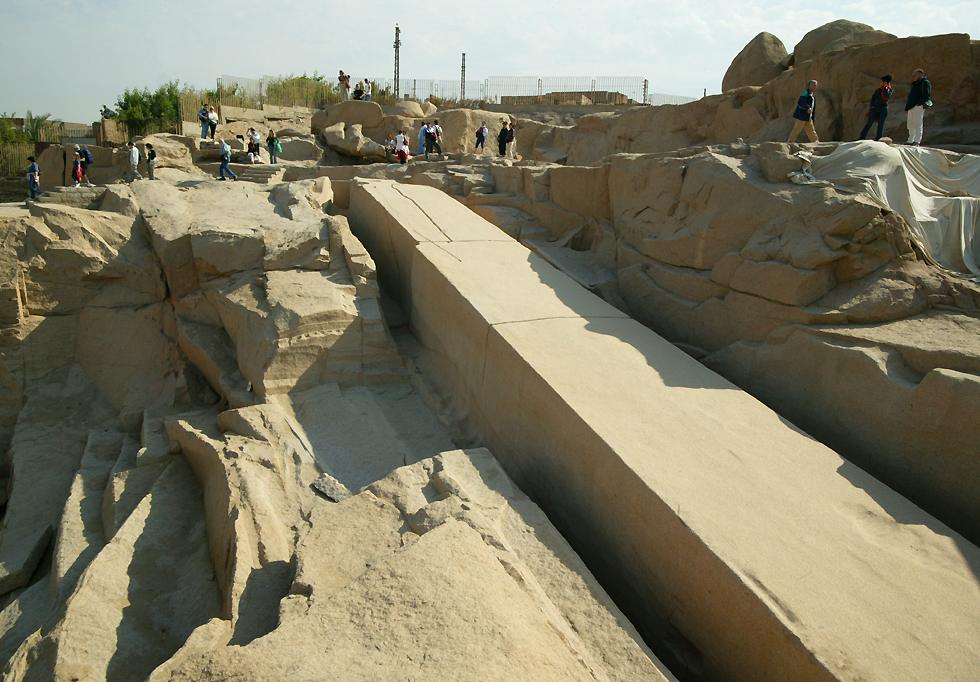 Unfinished Obelisk Unfinished Obelisk
In the Northern Quarries can be seen an unfinished obelisk (137ft/41.75m long, 14ft/4.20m across at the broader end), no doubt abandoned because of a crack in the stone. It is estimated that the completed obelisk would have weighed 1,168 tons and would have been the largest ever hewn. Round the obelisk has been cut a trench 212ft/75cm wide. On the surrounding rock faces, which are of moderate height, can be seen many traces of the work of ancient stonecutters. The blocks were detached from the rock by boring holes along a prescribed line, driving wedges into these and then soaking the wedges with water to detach the block. Statues, sarcophagi, obelisks, etc., were usually roughly dressed before removal in order to reduce the weight for transport. |
 
|
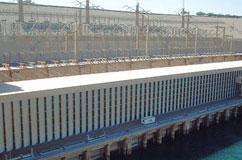 High Dam High Dam
Located near Aswan, the world famous High Dam was an engineering miracle when it was built in the 1960s. It contains 18 times the material used in the Great Pyramid of Cheops. The Dam is 11,811 feet long, 3215 feet thick at the base and and 364 feet tall. Today it provides irrigation and electricity for the whole of Egypt and, together with the old Aswan Dam built by the British between 1898 and 1902`, 6km down river, wonderful views for visitors. From the top of the two Mile long High Dam you can gaze across Lake Nassar, the huge reservoir created when it was built, to Kalabsha temple in the south and the huge power station to the north.
The High Dam created a 30% increase in the cultivatable land in Egypt, and raised the water table for the Shara as far away as Algeria. The electricity producing capability of the Dam doubled Egypt's available supply.
The High Dam added an whole new aspect to Egypt, and a new environment as well. The lake is some 500 miles long and at the time it was built, if not now, was the world's largest artificial lake. |
 
|
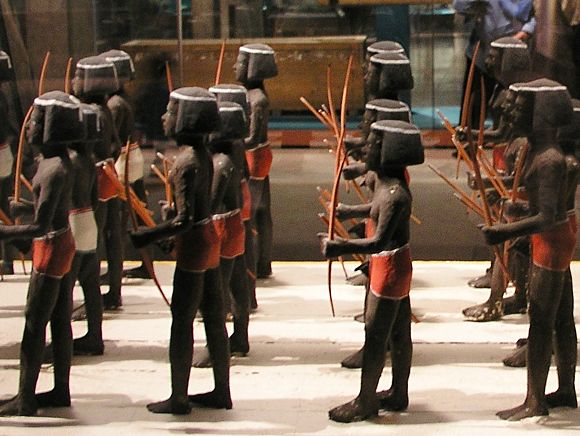 Nubian Museum Nubian Museum
In the early 1960's, when Egypt built the High Dam at Aswan, Egyptologists and archaeologists the world over heeded UNESCO's appeal to salvage the monuments of Egyptian Nubia before the rising waters of Lake Nasser submerged them forever. More than sixty expeditions ultimately joined the "Nubian Rescue Campaign", which resulted in the excavation and recording of hundreds of sites, the recovery of thousands of objects, and the salvage and translocation of a number of important temples to higher ground.
Due to the quantities of material recovered from tombs, temples and settlements, UNESCO was encouraged in the 1980's to plan a new Nubian museum in Aswan where the objects could be stored and exhibited. It was universally felt at the time that they should be kept as close as possible to their principal places of origin.
Nearly twelve years later, the Museum became a reality and opened its doors in November 1997. It was designed by the late Egyptian architect Mahmoud al-Hakim, and Mexican architect Pedro Vasquez Ramirez designed the museum's interior display. The Museum won the Agha-Khan Award of Architecture 2001.
The total area of the complex is 50,000 square meters: 7,000 allocated for the building, and 43,000 for the grounds. The architecture of the Museum and the enclosure walls are intended to evoke traditional Nubian village architecture, as it was along the Nubian Nile before the region was flooded by Lake Nasser.
The building is set within a landscape, on graded levels, that includes a sequence of waterfalls. When the waterway reaches the lower part of the garden, it divides into 2 branches to surround an open-air stage and amphitheater where already many local and foreign groups have performed. The remaining 43,000 sq. m. have been planted with palm trees, flowers, and climbing plants, spread over natural rocks. An outdoor exhibit is planned for the garden, but at the moment only a small section is ready. The project is a beautiful resolution of a long-awaited dream. |
 
|
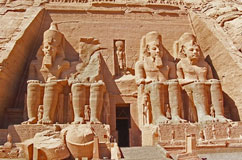 Abu Simbel Abu Simbel
Abu Simbel is an archaeological site comprising two massive rock temples in southern Egypt along the Nile about 290 km southwest of Aswan. It is part of the UNESCO World Heritage Site of "Nubian Monuments" which run from Abu Simbel downriver to Philae. The Great Temple of Ramses II at Abu Simbel consists of four seated colossal statues of Ramses II carved into the mountain, forming one of the boldest temple facades in the world.It is aligned so the sun's rays travel through the mountain and illuminate Ramses' sanctuary twice a year -- on October 22 and February 22.
Ramses II was a 19th dynasty pharaoh of Egypt. He ruled for 67 years during the 13th century BC, the apogee of Ancient Egypt's power and glory. This extraordinarily long reign, the wealth available in the state coffers, and, undeniably, the pharaoh's personal vanity meant that Ramses, of all the ancient rulers, left what is perhaps the most indelible mark on the country. His legacy can be seen most clearly in the archaeological record –in the many buildings that Ramses modified, usurped, or constructed from the ground up.
Construction of the temple complex started in approximately 1284 BC and lasted for about 20 years. Known as the "Temple of Ramesses, beloved by Amun", it was one of six rock temples erected in Nubia during the long reign of Ramesses. Their purpose was to impress Egypt's southern neighbors, and also to reinforce the status of Egyptian religion in the region. |
 
|
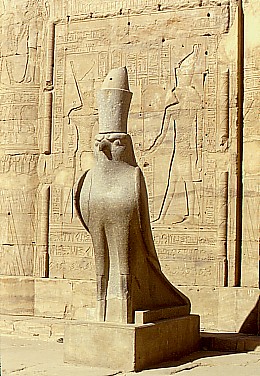 Temple of Horus, Edfu Temple of Horus, Edfu
The Temple of Horus in Edfu (also known as the Temple of Edfu) is considered the best-preserved cult temple in Egypt. This partly because it was built later than most: in the Ptolemaic era from 237 to 57 BC.
Yet despite its later date, it exactly reflects traditional pharaonic architecture and so provides an excellent idea of how all the temples once looked. Edfu is also very large: the second largest in Egypt after Karnak Temple.
The provincial town of Edfu is located about halfway between Luxor (115km away) and Aswan (105km) and 65km north of Kom Ombo. A very popular destination, Edfu is included in virtually all Egyptian tour itineraries and can be reached by taxi or by cruise on the Nile followed by a caleche ride.
In 332 BC, Alexander the Great conquered Egypt. After his death in 323, his successors ruled Egypt under the Ptolemaic Dynasty. This was the last dynasty of independent Egypt. The Ptolemies were Greeks but presented themselves to the Egyptians as native pharaohs and closely imitated the traditions and architecture of pharaonic Egypt.
The Temple of Horus at Edfu was built during the Ptolemiac era on top of an earlier
temple to Horus, which was oriented east-west instead of the current north-south configuration.
The oldest part of the temple is the section from the Festival Hall to the Sanctuary; this was begun by Ptolemy III in 237 BC and completed by his son, Ptolemy IV Philopator. The Hypostyle Hall was added by Ptolemy VII (145-116 BC) and the pylon was erected by Ptolemy IX (88-81 BC). The final touches to the temple were added under Ptolemy XII in 57 BC. |
 
|
 Temple of Sobek and Haroeris, Kom Ombo Temple of Sobek and Haroeris, Kom Ombo
The Temple of Sobek and Haroeris in Kom Ombo (also known simply as Kom Ombo Temple)
dates from about 180 BC during the Ptolemaic era, with additions made into Roman times. It stands right on the bank of the Nile between Edfu and Aswan, making it a convenient stop for river cruises.
In ancient times, Kom Ombo stood on an important crossroads between the caravan route from Nubia and trails from the gold mines in the eastern desert. During the reign of Ptolemy VI Philometor (180-145 BC), it became a training depot for African war elephants, which were used to fight the fierce pachyderms of the Seleucid empire.
The temple at Kom Ombo was also built at this time, under Ptolemy VI. Since this bend in the Nile was a favored spot for crocodiles to bask in the sun and threaten locals, it is natural that the temple would be dedicated to Sobek, the crocodile god. But it is unusual in having a double dedication: it also honors Haroeris, a form of the falcon-headed god Horus.
The hypostyle halls were added under Ptolemy XIII (51-47 BC); the Roman emperor Trajan (53-117 AD) added the forecourt and outer enclosure walls.
Today, Kom Ombo is home to many Nubians who were displaced from their ancestral homes by the rise of Lake Nasser caused by Aswan Dam. Tourism is not the only industry in Kom Ombo: sugar cane is harvested on the river banks and there are felucca-building yards here |
 
|
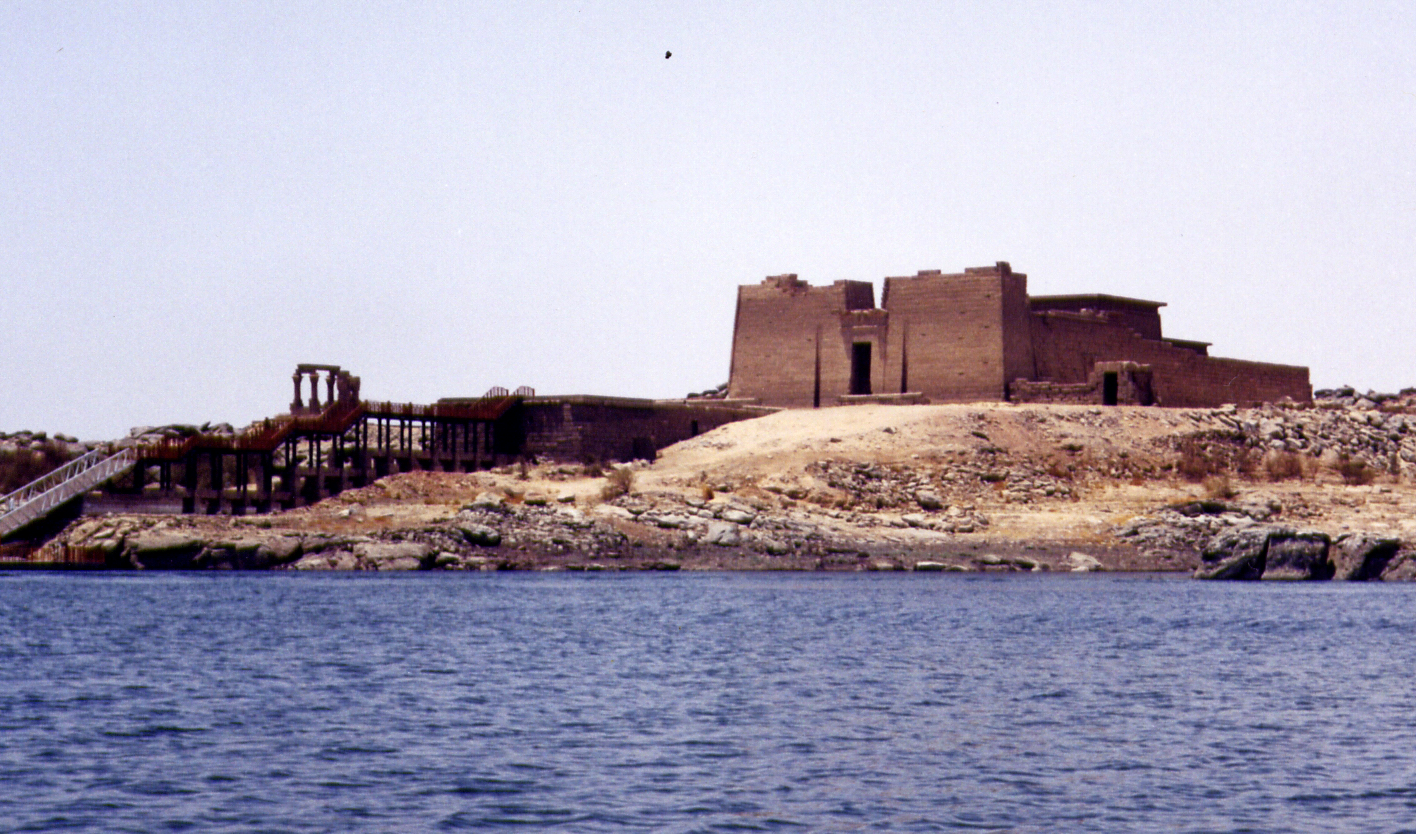 Kalabsha Temple Kalabsha Temple
The monuments of the old Talmis , which was the name of the original site of Kalabsha now disappeared under the waters of Nasser Lake , were moved to its present location at New Kalabsha (Challal) in 1970 .
Amenhotep II of the 18th dynasty founded the original temple , but the actual one was built by the Roman Emperor Octavius Augustus (30 BC to 14 AD) who dedicated it to the Nubian god Mandulis , identified with Ra and Min . There are also remains of an earlier temple from the Ptolemaic era .
The design of the temple is the same as that of the Ptolemaic era , with two pylons , courtyard , Hypostyle hall and three sanctuary rooms . Unlike other Ptolemaic temples , the building does not follow a straight axis so , the first pylon creates a trapezoid with the first courtyard .
The first courtyard once had columns on three sides with very few reliefs and some Meroitic inscriptions of King Kharamadoye and King , Silko who conquered the Nubian Blemmyes .
After the vestibule , there are three chambers including The Pronaos (a chamber preceding the sanctuary) and The Naos , or the sanctuary where statues of gods were located . There are also scenes representing
the king worshiping Mandulis , Horus , Min and other Deities . |
 
|
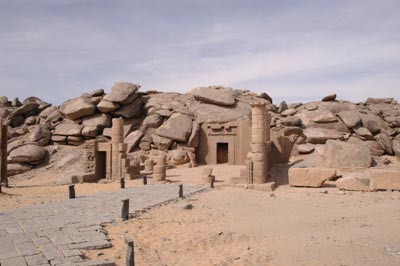 Temple of Beit el-Wali Temple of Beit el-Wali
The Temple of Beit el-Wali is a rock-cut Ancient Egyptian temple in Nubia which was built by Pharaoh Ramesses II and dedicated to the deities of Amun-Re, Re-Horakhti, Khnum and Anuket
It was the first in a series of temples built by Ramesses II in this region; its name Beit el-Wali means 'House of the Holy Man' and may indicate its previous use as by a Christian hermit at some point in time
The temple was relocated during the 1960's as a result of the Aswan High Dam project and moved towards higher ground along with the Temple of Kalabsha. This move was coordinated with a team of Polish archaeologists financed jointly by a Swiss and Chicago Institute respectively. The temple was located 50 kilometres south of Aswan |
 
|
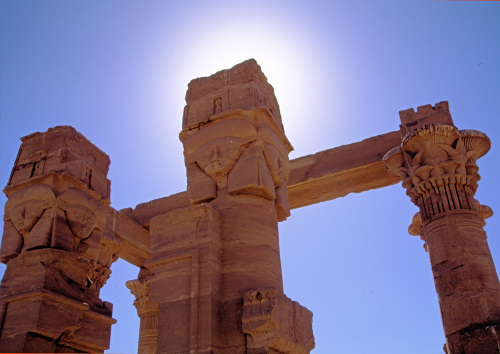 Temple of Kiosk of Kertassi Temple of Kiosk of Kertassi
To the south of the Kalabsha Temple near Aswan is the light, almost delicate Kiosk of Qertassi (Kertassi), with its two Hathor-headed columns, was moved at the same time and now stands near the water commanding fine views of Lake Nasser. |
 
|
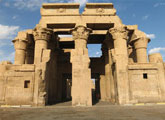 Wadi El Sebou Temple Wadi El Sebou Temple
Wadi El Sebou Temple was built by Setau , Viceroy of Kush (Nubia) in honor of Ramses II . The name Wadi el-Seboua means the Valley of the Lions and comes from Arabic because of the sphinxes guarding the temple . It lies about 100 kilometers away from the city of Aswan and it was one of the relocated monuments during the UNESCO Rescue Operation .
Only the two pylons and the rock cut part survived , and in the surroundings there are 2 colossi of Ramses , one upright , one fallen and 8 fine Sphinxes guard the temple that have the images of African and Asiatic prisoners in their bases . |
 
|
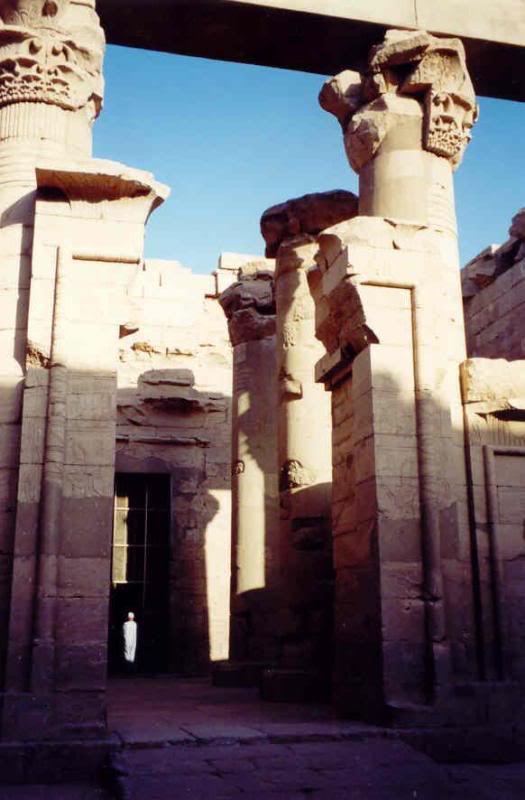 Temple of Dakka Temple of Dakka
Re-built at New Sebwa was the Temple of Dakka, originally situated 25mi/40km farther north from the Temple of Sebwa. The oldest parts of the temple, which was built on the site of an earlier temple, probably of the New Kingdom, and was dedicated to Thoth of Pnubs (an Ethiopian town), who was known to the Greeks as Paotnuphis, date from the time of the Ethiopian ruler Ergamenes and his contemporary Ptolemy IV Philopator. The pronaos was added by Euergetes II, and with the building of the sanctuary and the pylon in Roman Imperial times the temple reached its present form. It is aligned from north to south and thus, unlike most Nubian temples, lies parallel to the river.
A little way south of the original site of the Dakka
Temple was the village of Kuban, with remains (now lost under the waters of Lake Nasser) of the ancient settlement of Beki, which commanded the road to the gold mines of Umm Garayat. |
 
|
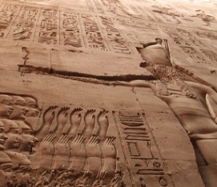 Temple of Meharakka Temple of Meharakka
The smallest temple we saw on this site was the temple of Meharakka, which was build under Roman rule. The temple was not finished, but is special because it has the only spiral staircase in any ancient Egyptian structure. It was dedicated to Serapis, the Alexandrian god. This god was introduced in Egypt in Ptolemaic times, and is a fusion of the Egyptian Gods Osiris and Apis and the Greek gods Zeus and Aesculape. |
 
|
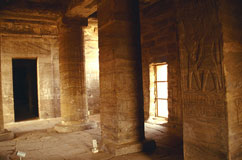 Temple of Amada Temple of Amada
The temple is located 20 KM to the south of Wadi es-Sebua, the area had also the temple of El-Derr and the tomb of Aniba. Amada is located at 115 KM to the south of Aswan. The temple was built at the time of the new kingdom by kind Thtmaosis III and Amenhotep II,
It was dedicated to the god Amon Ra, and RA Hor –Ahkty.Additions were made later on by king Thutmoes IV and it was renovated at the time of king Seti I In this temple king Thuhmosis II venerated the middle kingdom king Senusert III of the 12th dynasty, honoring the victorious campaigns that king Senusert have made in the land of Nubia |
 
|
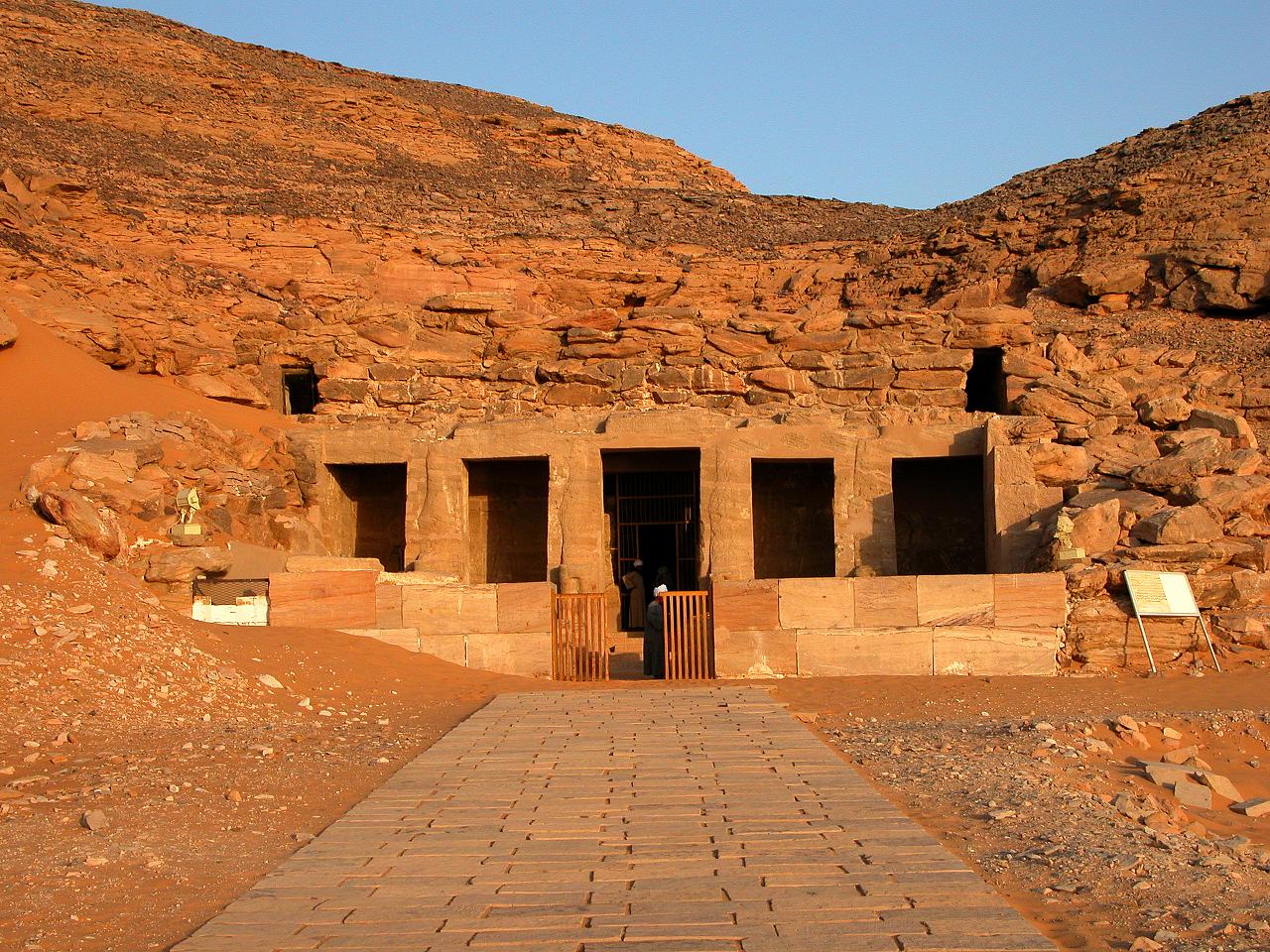 Temple of Derr Temple of Derr
This area is located 208 KM south of Aswan, the temple was rock cut during the time of king Ramses II, it was dedicated to go Petah and god Amon as well as Ramses II as a deified person.
The temple walls are decorated with scenes representing Ramses II military campaigns against Nubia and scenes of offering to the god of the temple.
This temple was badly destroyed though out the centuries and many part of it have been reused for other building or was lost. |
 
|
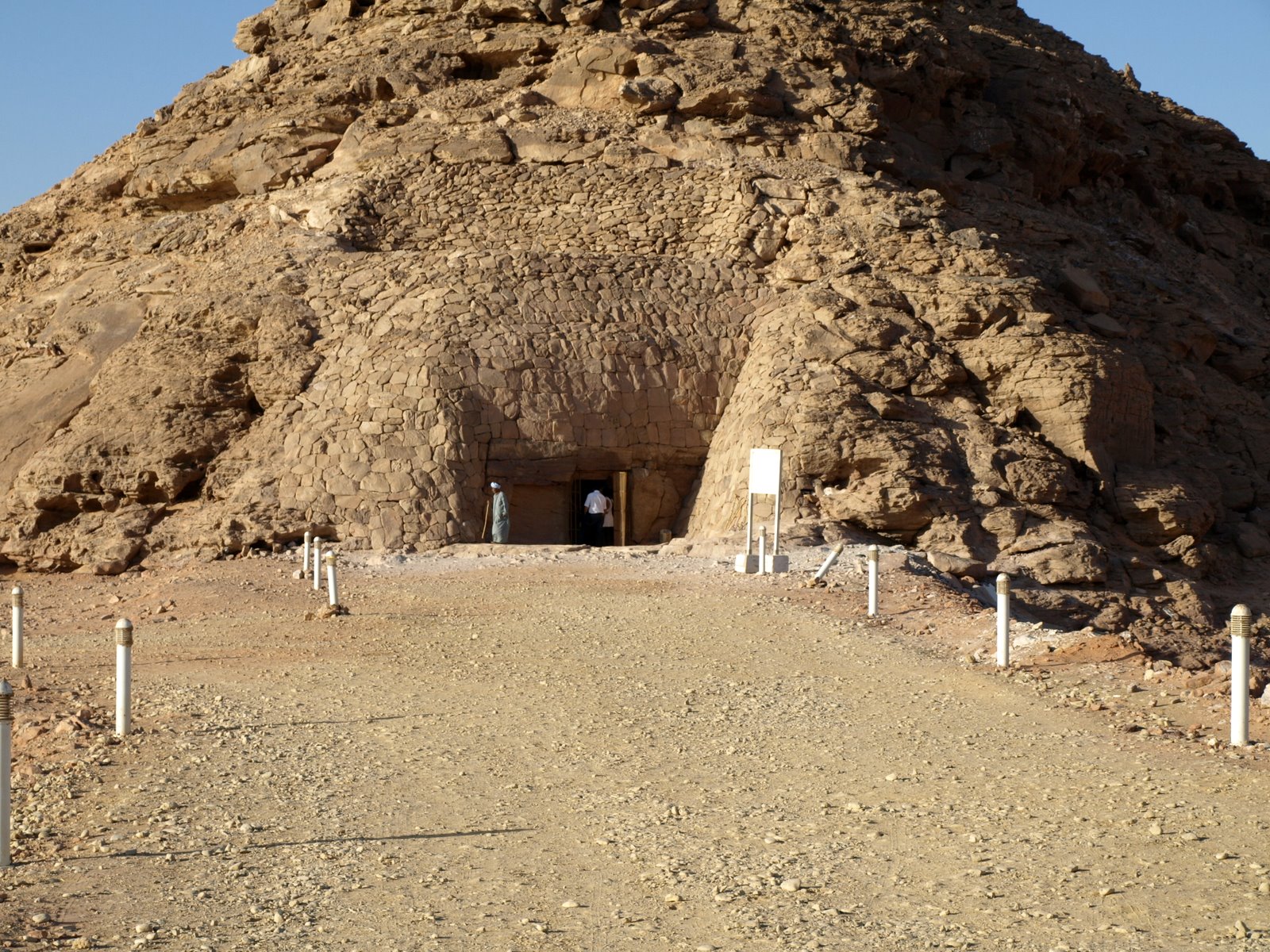 Tomb of Penout Tomb of Penout
Penout was a governor of Lower Nubia during the reign of Ramses IV (12th century BC). He was probably Nubian as in the Egyptian tradition people were buried in the land where they were born. The rock cut tomb is decorated with wall paintings depicting scenes of Penout’s life. Unfortunately many were damaged when peoples tried to steal some of these decorations.
After this last temple of the day we walked back to the Lake Nasser beach, where we saw hundreds of dragonflies. This time we did not only see the red and blue varieties, but also one with black wing tips. |
 
|
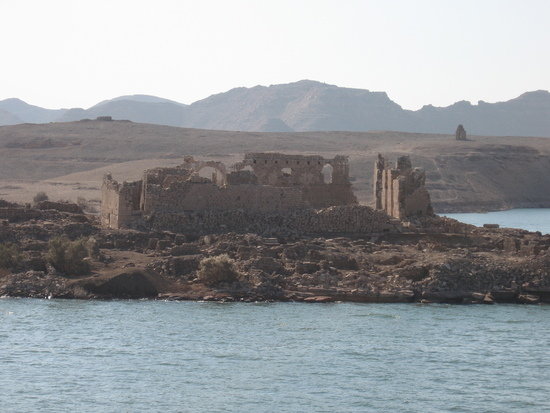 Citadel of Kasr Ibrim Citadel of Kasr Ibrim
This area is located 235 KM to the south of Aswan, the, the area is built on high hillock overlooking the Nile opposite Aniba village.
In ancient Egyptian the area was known as PER-MIT, that became PREMIS during the Greco-Roman times and then Ibrim during the Arabs times. The area is full of monuments that date back to various parts of history, including tombs of the Nubian rulers during the New Kingdom times; they ruled Nubian during Thutmosis III.
The citadel had a very important rule through out the ancient Egyptian history and later.
During the Christian area, a church was built in there and was dedicated to the Virgin Mary
The area has yielded so many artefacts that are now in display at Nubian museum. |
 
|
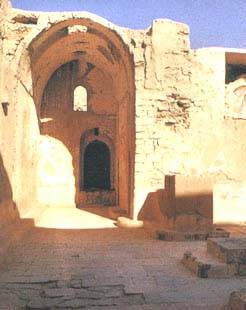 Monastery of St. Simon Monastery of St. Simon
Monastery was built in the 6th century and monks abandoned it later, probably after 7 centuries, because of cruel barbaric attacks. Although abandoned, it is in a good state of preservation and secluded in the deserts of Aswan.
The monastery has massive walls and is built in two levels: the lower level is built of stone while the upper one of mud bricks. It has a keep that was supposed to harbor the monks at the time of attacks.
The monastery looks like a fortress rather than a religious compound. Buildings inside follow the typical composition of Coptic monasteries: a church, storeroom, kitchens, bakeries and dormitories.
The monastery is reached by a donkey or horse ride from the Qubbet Al-Hawa or through a route from Agha Khan mausoleum. |
 
|
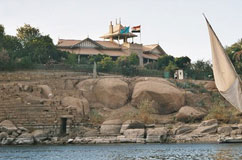 Elephantine Island Museum Elephantine Island Museum
The Elephantine Museum is located on Elephantine Island and has artifacts primarily related to that area. The white clapboard house where the museum is located also has the distinction of being the former villa of Sr. William Willcocks, the designer of the first Aswan dam. Some the more notable exhibitions at the museum include a mummified Ram of Khnum, a golden bust of Khnum, statues of Amenhotep III with goddesses and prehistoric schist basins. |
 
|
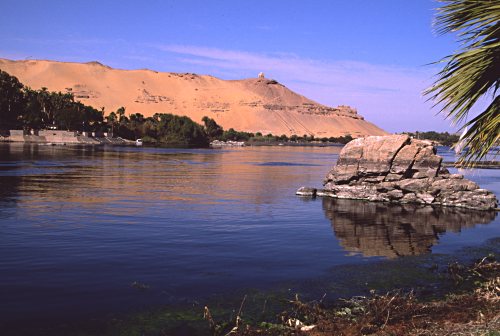 Elephantine Island Elephantine Island
Elephantine Island is the largest of the Aswan area islands, and is one of the most ancient sites in Egypt, with artifacts dating to predynastic periods. This is probably due to its location at the first Cataract of the Nile, which provided a natural boundary between Egypt and Nubia. As an island, it was also easily defensible. In fact, the ancient town located in the southern part of the island was also a fortress through much of it's history. At one time, there was a bridge from the mainland to the island.
Elephantine is Greek for elephant. In ancient times, the Island, as well as the southern town, was called Abu, or Yabu, which also meant elephant. The town has also been referenced as Kom, after it's principle god of the island, Khnum (Khnemu). It is believed that the island received it's name because it was a major ivory trading center, though in fact, it was a major trading post of many commodities. There are large boulders in the river near the island which resembled bathing elephants, particularly from afar, and this too has been suggested as a reason for the island's name. |
 
|
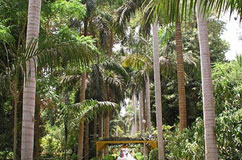 Botanical Island (Kitchner's Island ) Botanical Island (Kitchner's Island )
Kitchner's Island is a botanical garden, filled with exotic plants and trees imported from all over the world. It is a perfect place to spend a lazy afternoon in the shade.
The island must be reached by boat, and is located on the other side of Elephantine Island from Aswan. The Island was given to Lord Kitchner for his campaigns in the Sudan, and he moved their and created his garden, importing plants and trees from all over the world. Today, the Egyptian government operates this popular tourist destination. |
|
|
|
|
|
|
|
|
 |
|
